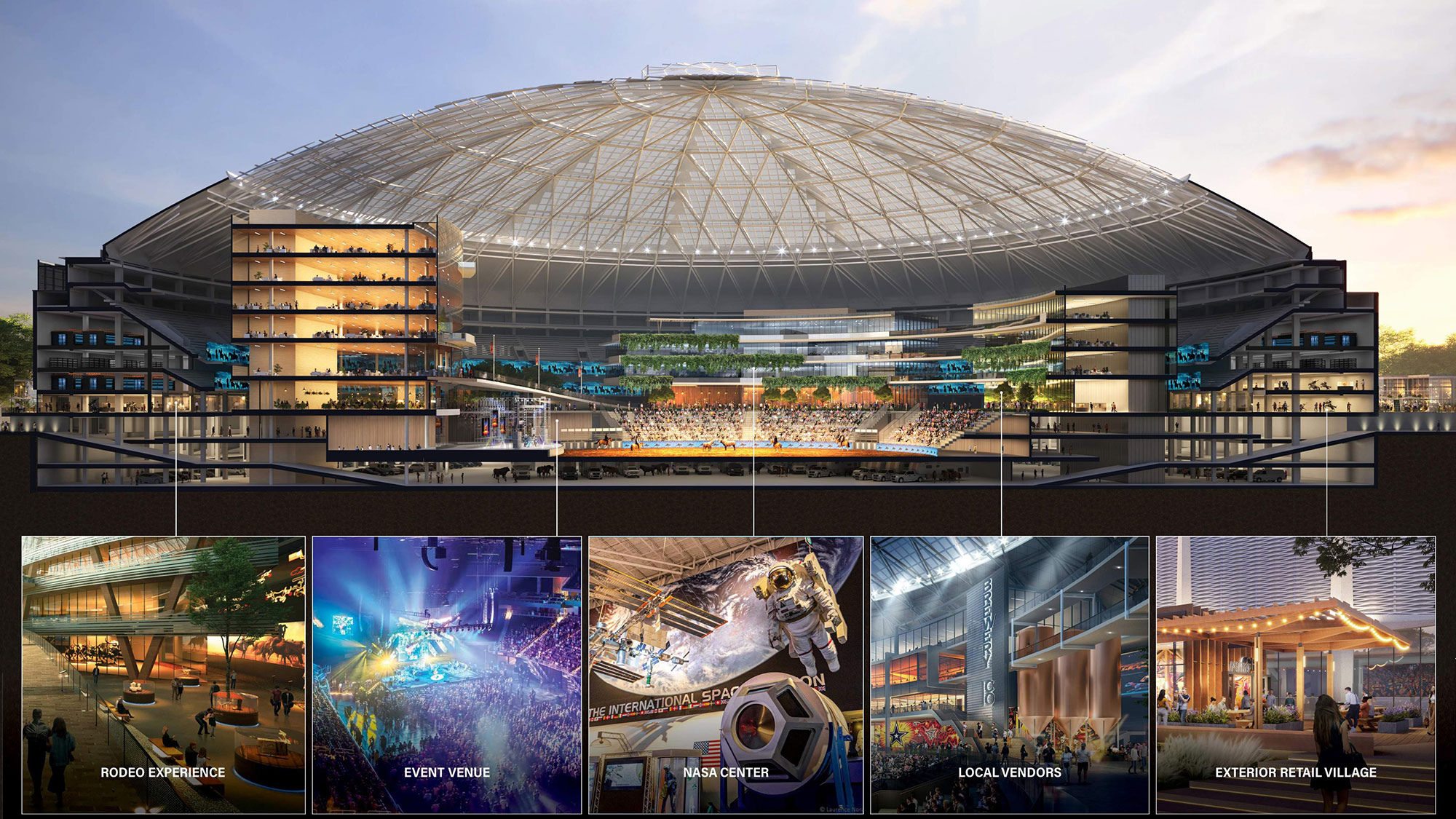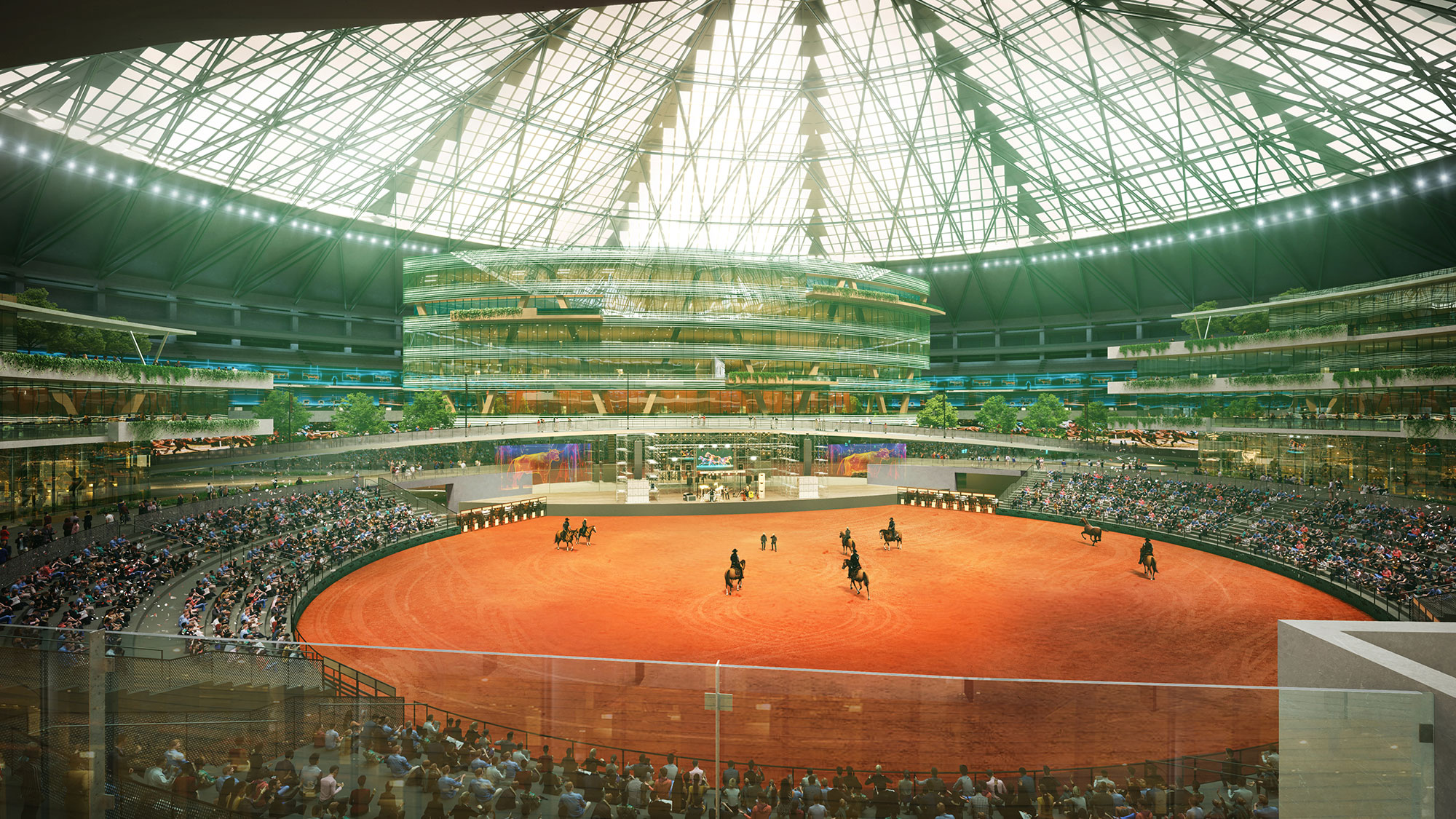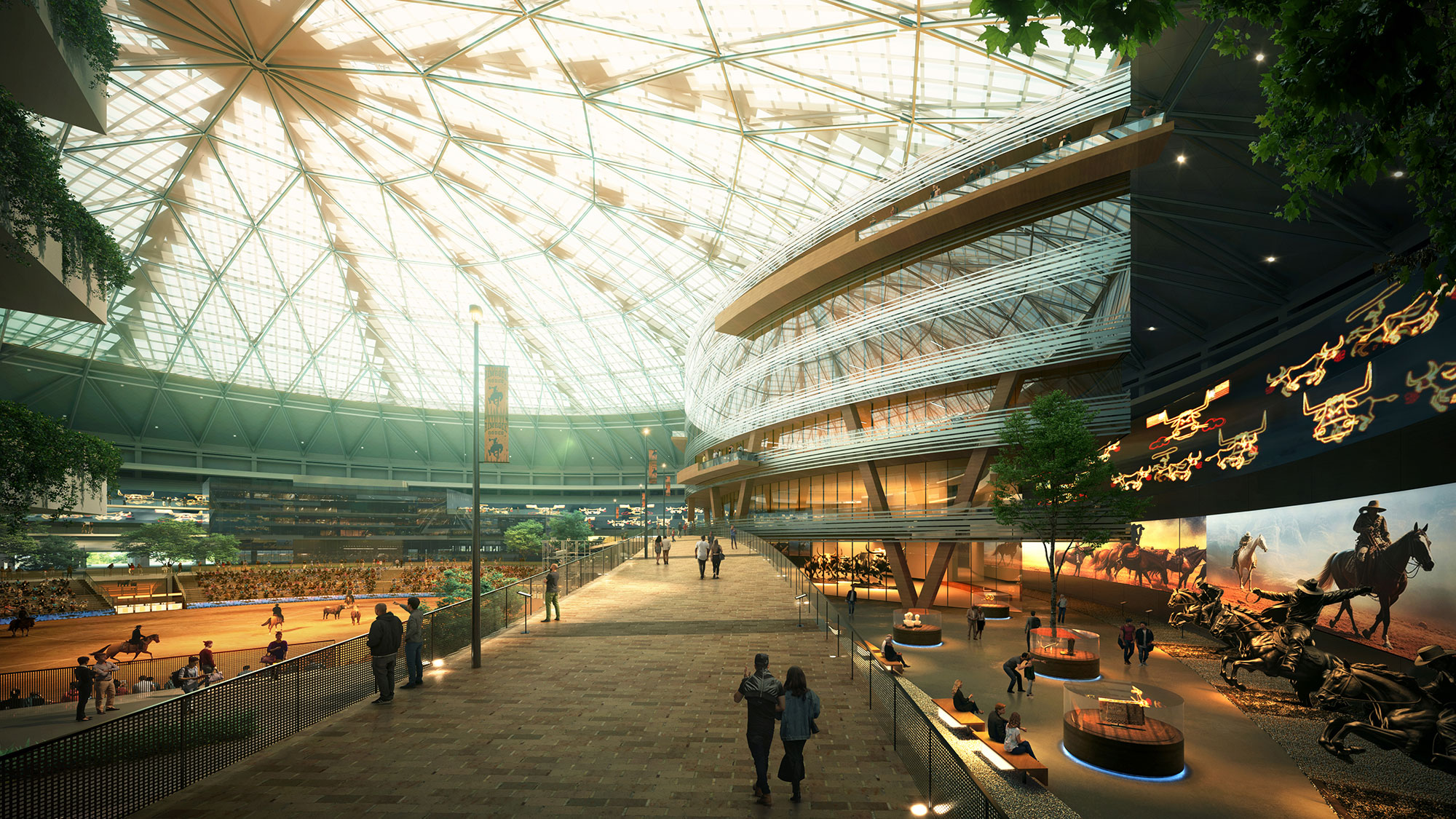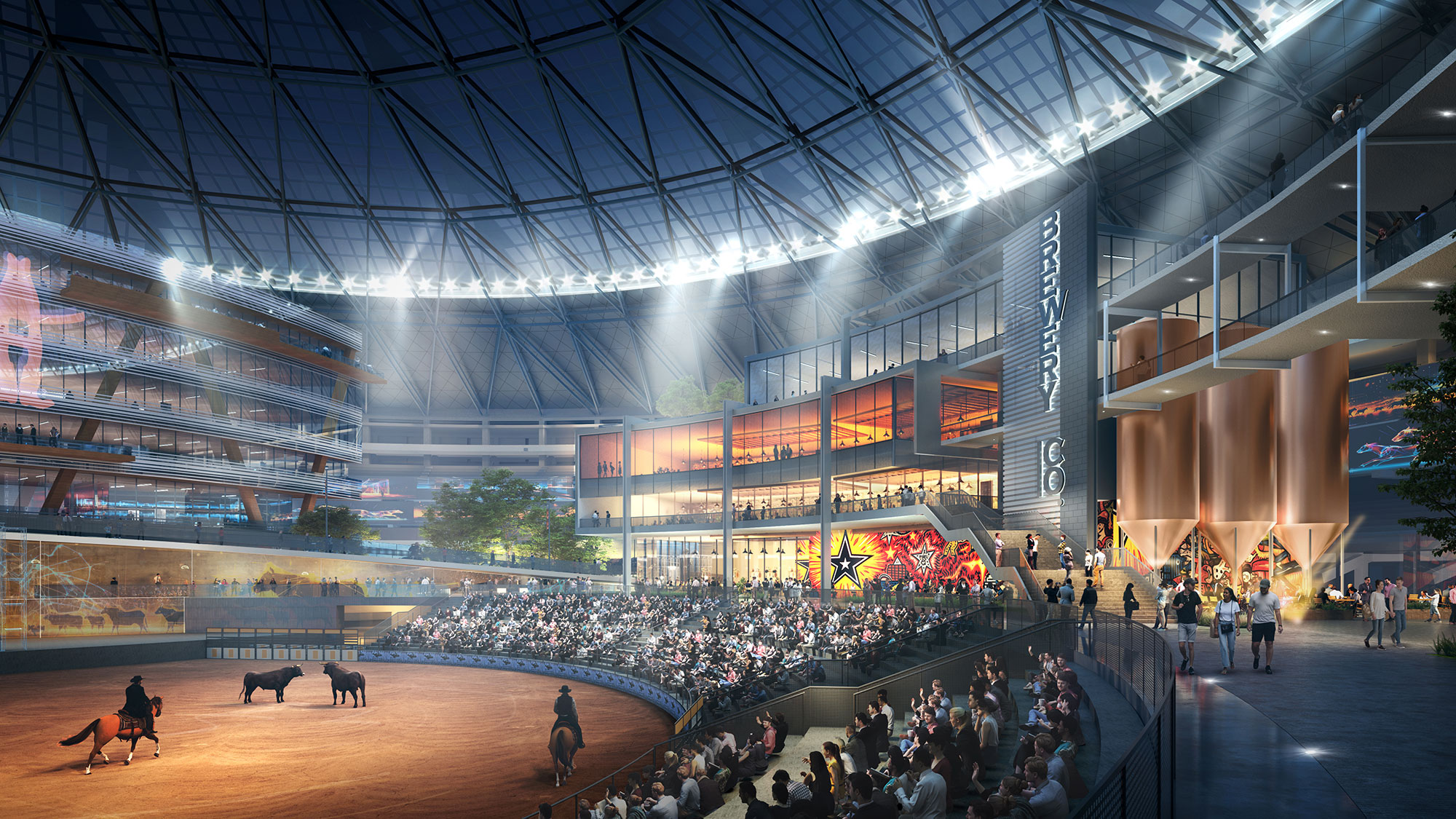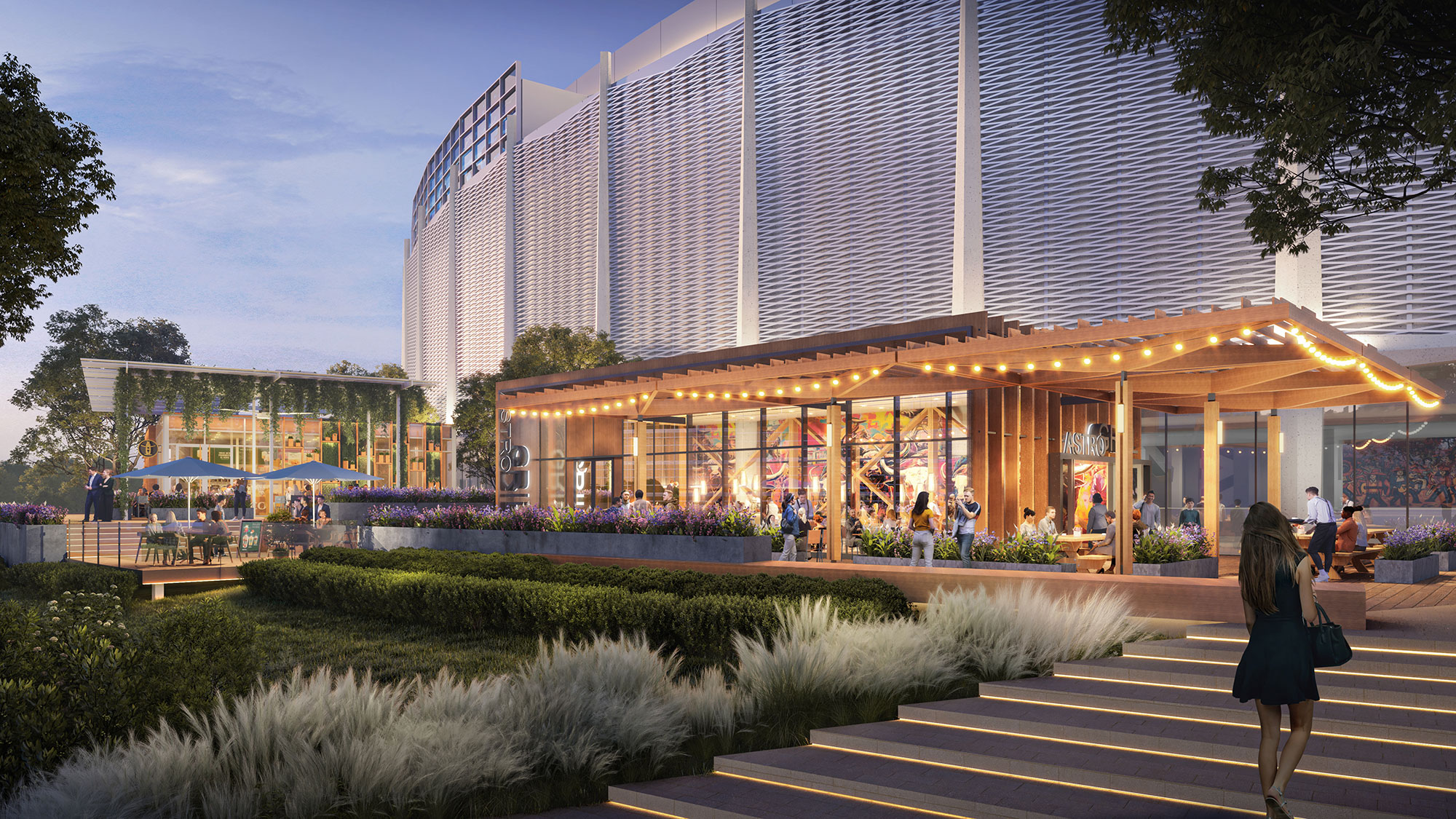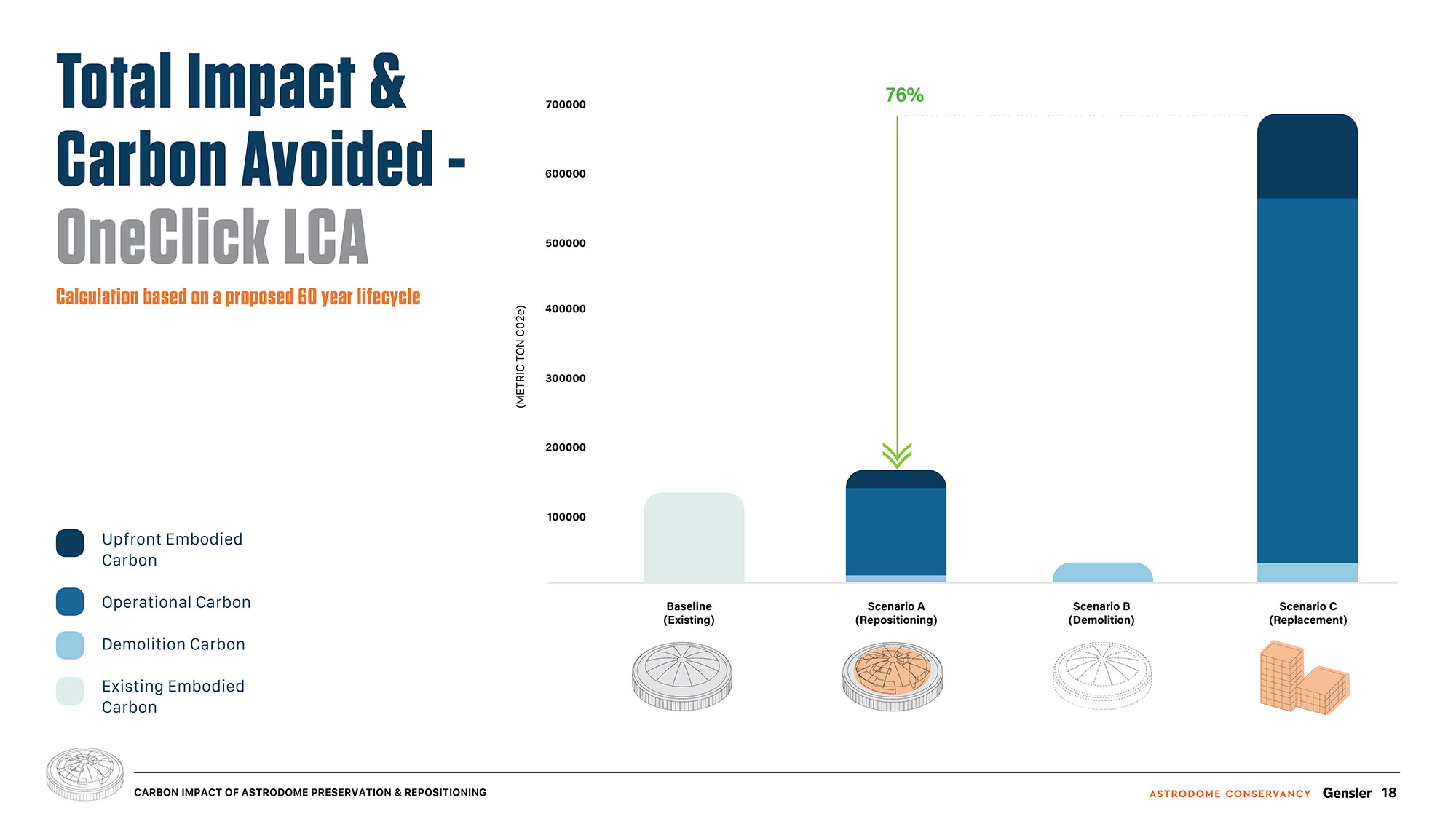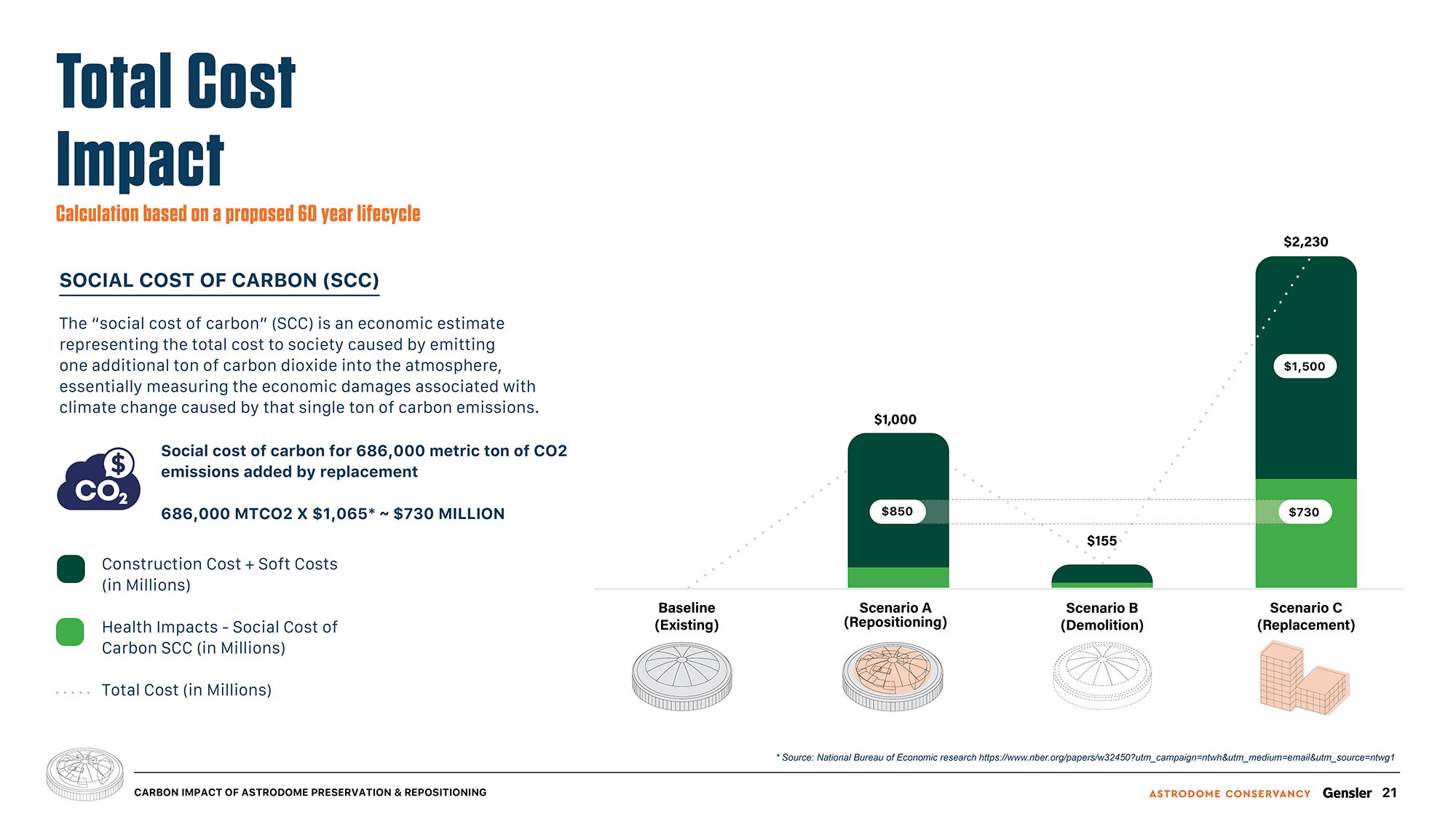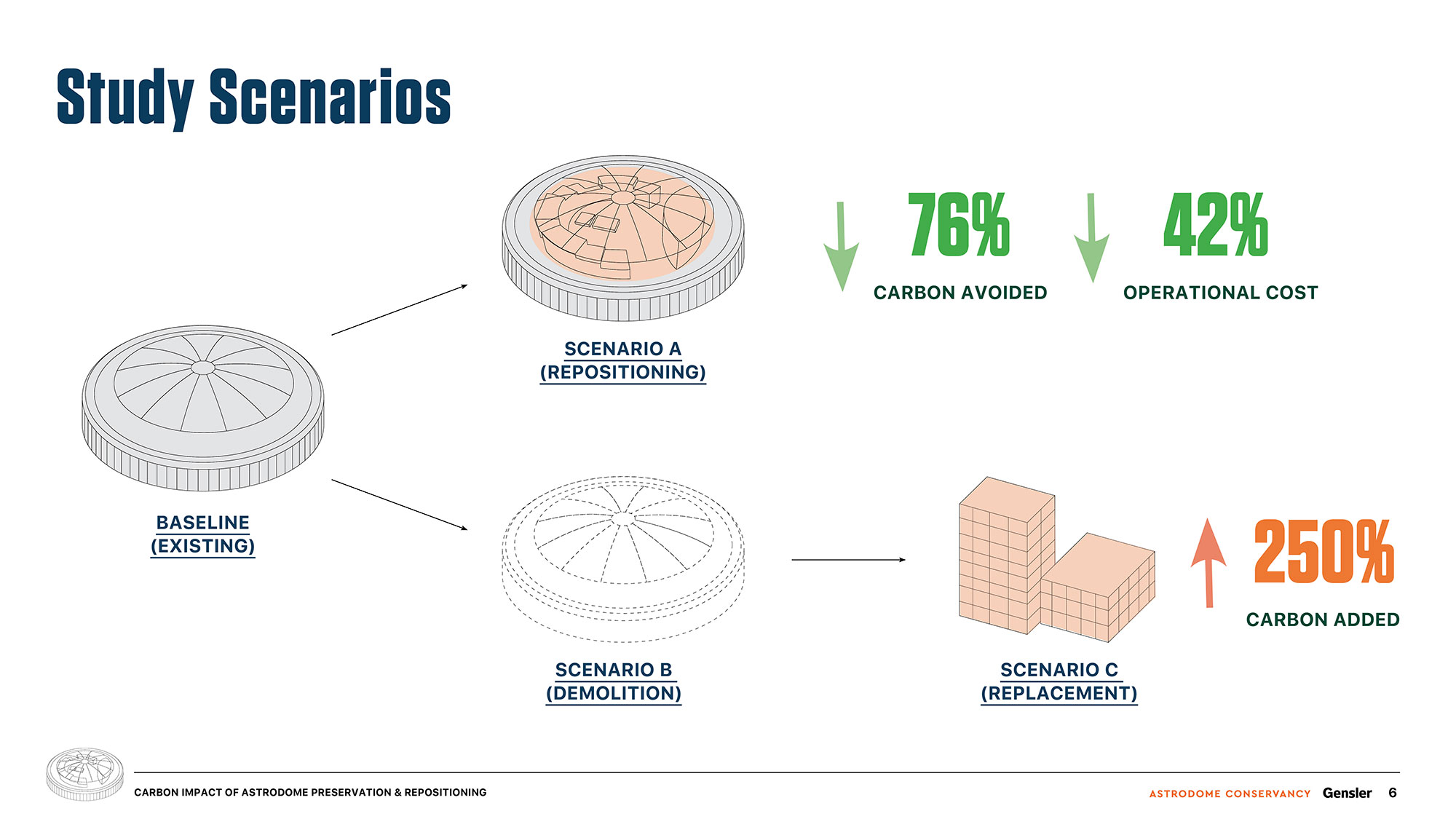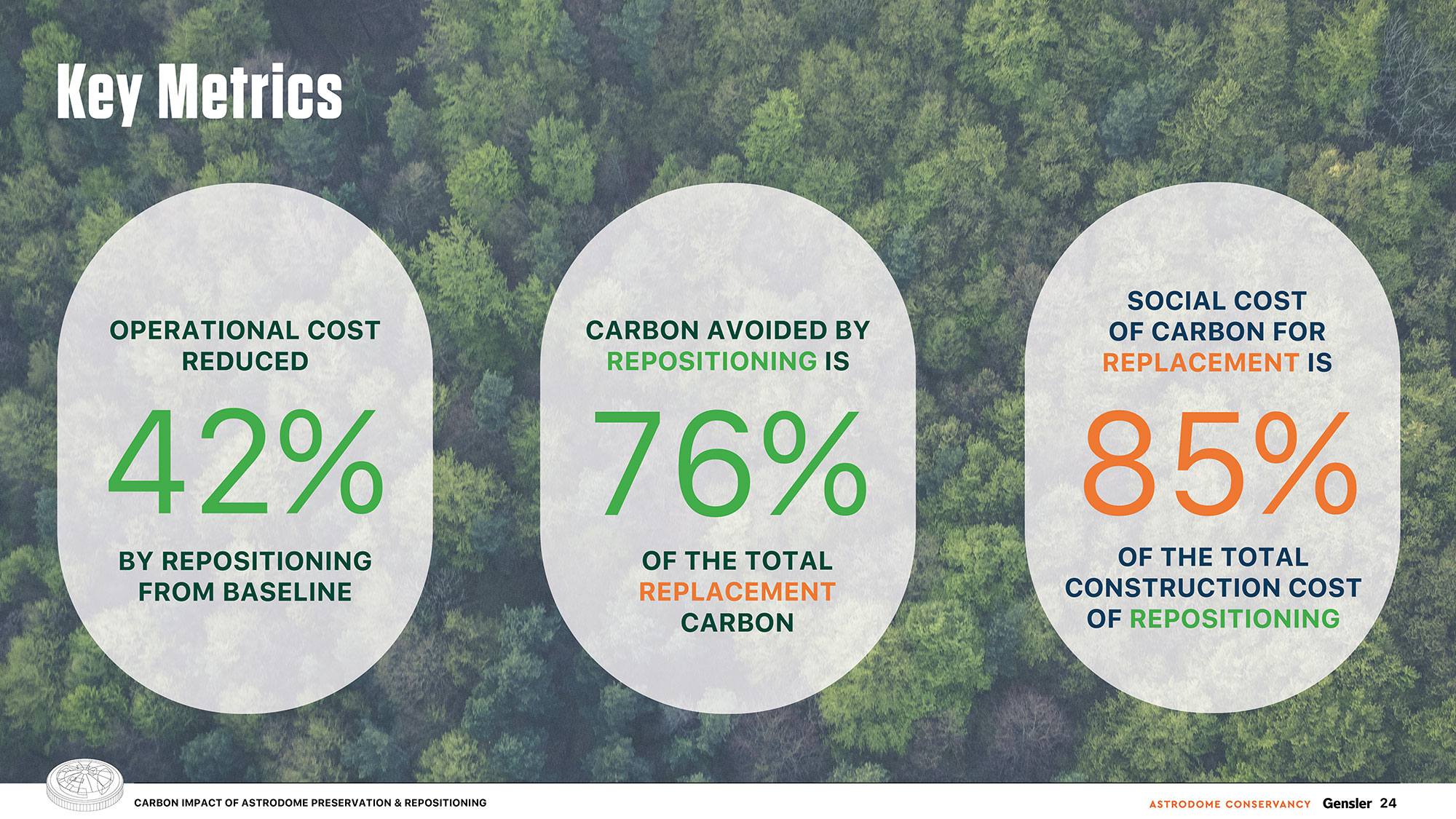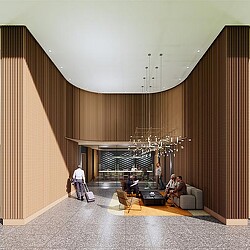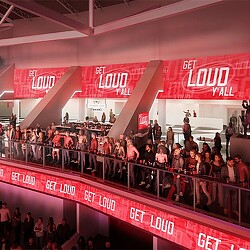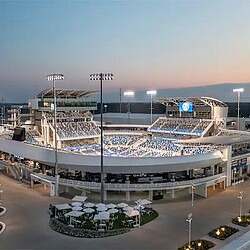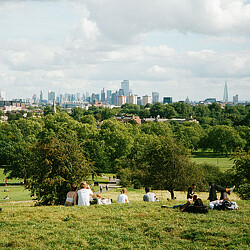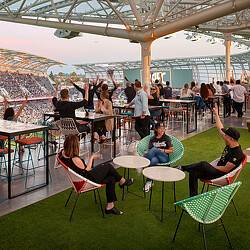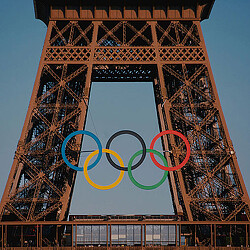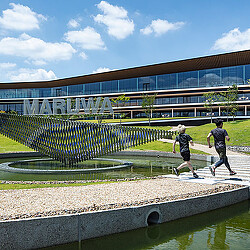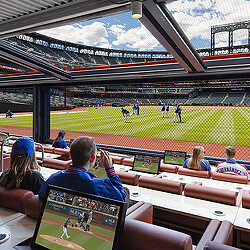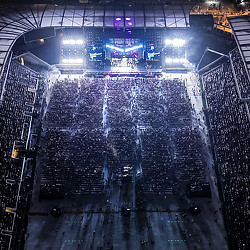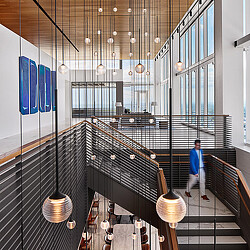How Repositioning Houston’s Astrodome Can Serve as a Model for Aging Sports and Entertainment Venues
Redeveloping and repurposing the iconic stadium into a multi-use venue would preserve the building’s historic integrity while giving it new life.
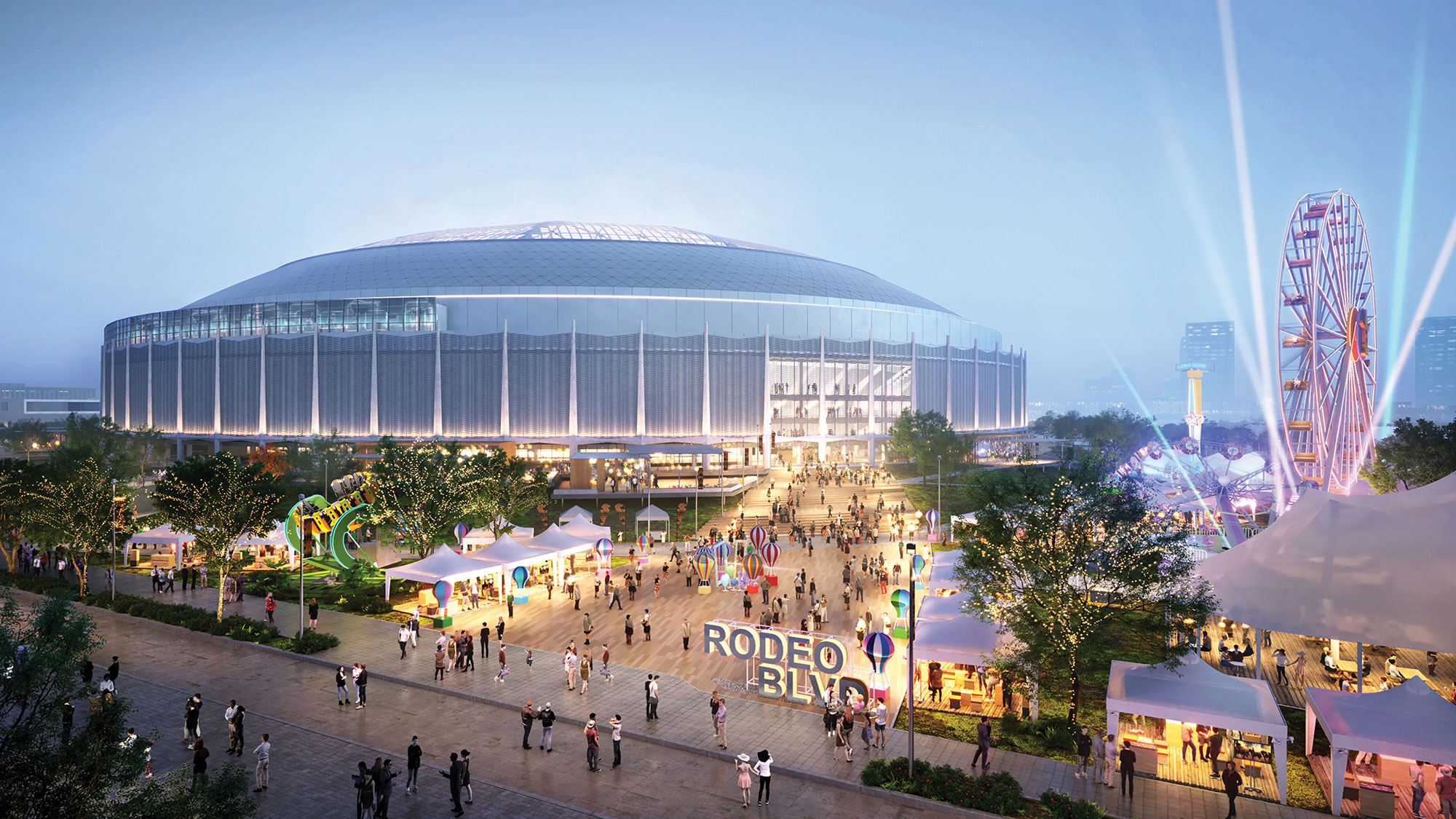
Sports and entertainment venues and facilities serve as hubs for social gatherings and are often hailed as a city’s most sought-after destination. However, across the globe, many of these iconic sites are becoming dated, leaving local stakeholders to decide whether to demolish and rebuild, or renovate what exists.
Though it may seem easiest to tear a structure down and start new, it’s important to consider how to be good stewards of often public funds. Traditionally, stadiums are designed and constructed to exist for decades, fashioned of concrete and steel to support the load of tens of thousands of audience members but are often considered outdated after 20 years of use, despite withstanding the test of time.
Additionally, many stadiums today are not economically viable in their conventional single-use capacity, which presents the opportunity to expand programming and utilization to drive supplementary revenue year-round. If revenue streams can be established consistently, the funds could support the upgrades and maintenance of an existing stadium and its grounds, making a compelling case for the adaptive reuse of these facilities.
The Case for Adaptive Reuse
Reusing existing buildings yields many economic and environmental benefits. Heritage sites boost tourism revenue and support local economies and businesses like hotels and restaurants. Programs like the Historic Preservation Tax Credit (HPTC) offer financial incentives for rehabilitating historic buildings and encourage private investment. Reusing existing buildings can significantly reduce climate impacts by cutting embodied carbon emissions, minimizing construction waste, and conserving natural resources.
In Houston, a city that tends to favor building from the ground up, the future of the Astrodome, the world’s first multipurpose, domed sports stadium, lies in the balance. At its core, the Astrodome serves as a symbol of Houston and Harris County’s history and architectural heritage and fosters a sense of identity, continuity, and pride.
In recent informal surveys, the overwhelming majority of respondents indicated they favor saving the structure, which offers an opportunity to assess what repositioning the Astrodome could mean for not only its legacy but also its carbon impact.
Our Vision for the Astrodome
In partnership with the Astrodome Conservancy, a nonprofit dedicated to promoting the Astrodome’s legacy through preservation and development, Gensler developed a strategic vision for a repurposed Astrodome.
The resulting design includes four state-of-the-art buildings inside the structure, featuring flexible, central arena space for events and entertainment, surrounded by restaurants, retail, office and commercial, hospitality, and cultural spaces. A sweeping, dynamic boulevard, inspired by New York City’s Highline, would move people through the venue while connecting adjacent facilities.
Simultaneously, Gensler performed a Carbon Impact Study to determine the feasibility of repurposing the building for its new intended use. This study evaluated the carbon footprint associated with preserving the Astrodome compared to demolishing it and constructing a new, in-kind building. Repositioning the landmark for new functions could further enhance its value, extend its lifecycle, and make it more adaptable to modern needs while preserving its historic significance.
Overall, the study found that preserving and repositioning the Astrodome through adaptive reuse yields a 76% lower carbon impact, as compared to the value associated with replacing it with a new, in-kind building. Tangibly, this is the equivalent of eliminating 112,990 cars from the road for a year or powering 147,239 homes for a year.
Ultimately, restoring the Astrodome could have many economic and environmental benefits:
- Revenue generation: Incorporating entertainment, hospitality, commercial, and retail spaces could provide a unique, year-round destination for millions of visitors for years to come, while catalyzing development around the park.
- Reduce operational cost: Modernizing and replacing energy systems enhances efficiency, leading to reduced energy consumption and lower operational costs. By integrating with renewable energies and incorporating advanced monitoring and control technologies, better data will be provided for decision-making and optimizing operations.
- Structural resilience: Retrofitting will upgrade materials to more resilient options and reinforce existing elements, enhancing the building’s ability to withstand environmental stress and multiple new uses. The existing free-span space could not be replicated in new construction.
- Future proofing: Integrating energy-efficient systems (HVAC, insulation, lighting) and smart building technologies will enhance operational efficiency, improve occupant comfort, and ensure adaptability to the many proposed new uses for the Astrodome.
- Lowest social cost of carbon: The construction cost of repurposing the Astrodome is significantly less than that of the social cost of carbon for a new, in-kind structure. The “social cost of carbon” (SCC) is an economic estimate representing the total cost to society caused by emitting one additional ton of carbon dioxide into the atmosphere, essentially measuring the economic damages associated with climate change caused by that single ton of carbon emissions.
Preserving the Astrodome with a dual focus on cultural legacy and environmental sustainability will create a balance between the past and the future, demonstrating that cultural preservation and carbon reduction can work together to shape a more sustainable, culturally rich world for generations to come.
As we contemplate the fates of the various venues that are reaching obsolescence due to age, lack of modern amenities, or competition from newer facilities, it’s important to evaluate how the structures can be saved, both for the nostalgia they provide the community and the opportunity to do better for the environment.
Repurposing what exists is not only sustainable, but it often adds to the guest experience, building upon the stories and memories that decades of fans and visitors have accumulated. In repositioning, we can ensure environmental responsibility while blending historical, cultural, and architectural legacy with functional future use.
For media inquiries, email .
